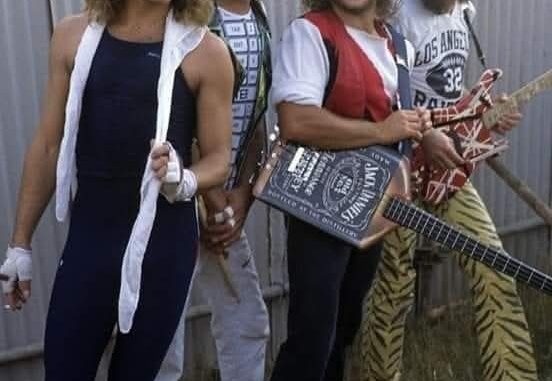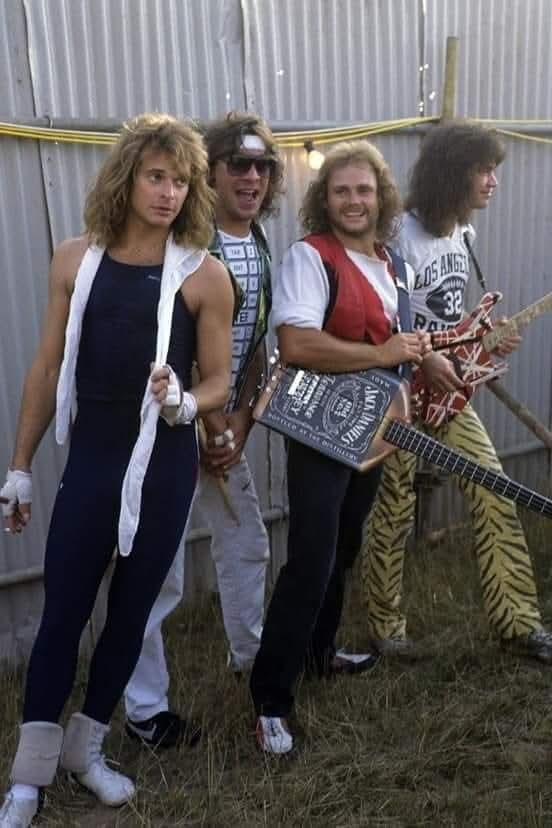
Few bands in rock history have burned as brightly, or battled as fiercely as Van Halen. With their explosive sound, electrifying performances, and guitar wizardry, they changed the face of hard rock in the late 1970s and beyond. But behind the scenes, the band faced intense internal challenges that would lead to multiple breakups, lineup changes, and creative standoffs.

Clash Of Frontmen: Roth vs. Hagar (And Beyond)
One of the most publicized and polarizing elements of Van Halen’s history was its revolving door of lead singers. Original frontman David Lee Roth helped define the band’s early glam-hard rock aesthetic, but his ego clashed with the Van Halen brothers especially Eddie.
By 1985, Roth had left (or was pushed out), and Sammy Hagar stepped in. Though the band continued to find success with hits like “Right Now” and “Why Can’t This Be Love”, the chemistry was never quite the same. Tensions between Hagar and Eddie Van Halen grew, especially over creative direction and control.
After Hagar’s departure in 1996, a brief, chaotic reunion with Roth followed and then Gary Cherone entered the picture, resulting in a critically panned album (Van Halen III) and a short-lived era. The constant shifting of frontmen fractured fan loyalty and creative momentum.
Eddie Van Halen’s Battles Personal And Professional
Guitar legend Eddie Van Halen was the band’s creative engine, but he also faced deep personal struggles, particularly with substance abuse. His addictions and perfectionism reportedly made studio sessions increasingly volatile, especially in the later years.
While Eddie’s brilliance as a musician was never in question, his relationships even with his brother Alex Van Halen and son Wolfgang were tested by years of touring pressure, industry demands, and interpersonal fallout.
Creative Control And Vision Clashes
Throughout the band’s evolution, disagreements over musical direction often tore at the fabric of Van Halen. Roth pushed for theatricality and old-school showmanship, while Hagar leaned into more melodic, radio-friendly rock. Eddie, always experimenting with guitar tones and studio production, often found himself caught in the middle or clashing with his collaborators.
The result was a band that struggled to maintain a unified identity, even as they remained commercially successful.
Delayed Reunions And Missed Opportunities
Attempts at reunions were often short-lived or plagued by controversy. The long-awaited tour with David Lee Roth in the 2000s was marred by inconsistent performances and backstage friction. Fans hoped for a full reunion of the original lineup, but bassist Michael Anthony was excluded, replaced by Wolfgang Van Halen, another move that divided the fanbase.
The End Of An Era
The death of Eddie Van Halen in 2020 marked the end of Van Halen as a band. His passing left a massive void in the rock world and confirmed that any future Van Halen activity would only live on through legacy, tribute, or the solo work of its surviving members.
Legacy Forged In Fire
Despite or perhaps because of their many challenges, Van Halen’s story is one of enduring impact. The drama, the changes, the raw tension, they were all part of the energy that made the music unforgettable. From Eruption to Panama, from Jump to Dreams, Van Halen remains a pillar of rock history complicated, combustible, and utterly iconic.
Leave a Reply